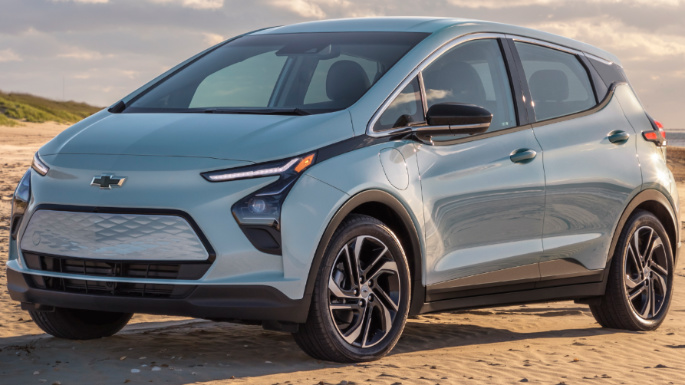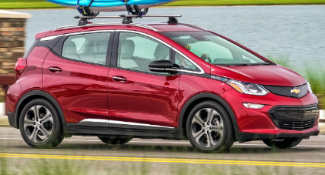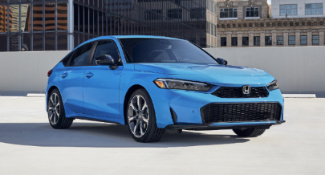The Chevy Bolt EV was a subcompact electric hatchback produced by General Motors for the 2017 through 2023 model years that won the Motor Trend Car of the Year award in 2017. Its spinoff sister vehicle, the Chevy Bolt EUV, was a crossover introduced in 2022 and 2023.
Both models were discontinued after the 2023 model year, despite their strong popularity in America.
The Bolt EV was designed as an affordable electric vehicle to target the likes of the Nissan Leaf, the Hyundai Ioniq, the Toyota Prius, the Ford C-Max Energi, and even its corporate sibling, the Chevrolet Volt. Even though most of these cars were hybrids or plug-in hybrid vehicles, the first Bolt’s relatively low starting MSRP of $36,620, coupled with its $4,500 of available tax credits and rebates, made it an attractive new car at the time.
Its reasonable starting price helped sales, but the arrival of the Chevrolet Bolt EUV crossover in 2022 contributed to the hatchback’s decline, as buyers favoured the larger model. With the EUV, the Bolt’s overall reach expanded to compete with electric and hybrid crossovers, such as the Kia Niro, the Volkswagen ID.4, the Hyundai Ioniq5, and the Hyundai Kona Electric. Much like its smaller sibling, the Bolt EUV’s low $33,800 starting MSRP helped it stand out in an increasingly crowded segment.
The Bolt was discontinued so its factory could start producing the Chevrolet Silverado EV and the GMC Sierra EV, but General Motors CEO, Mary Barra, hinted that a new Bolt would resurface in the coming years, using GM’s next-generation Ultium battery technology. GM Authority has since confirmed that the next-gen Bolt would likely arrive at dealerships for the 2026 model year.
2017-2023 Chevrolet Bolt EV (First Generation)
The Chevrolet Bolt EV was first introduced at the Las Vegas Consumer Electronics Show in 2016 and made its debut as a full-production EV for the 2017 model year. It came exclusively with a hatchback body style, opening up interior and cargo space to compensate for its short 102.4-inch wheelbase and generally compact size.
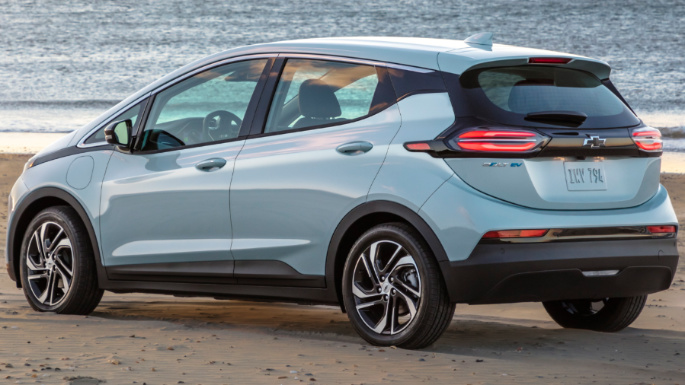
Each new Bolt featured an ell-electric powertrain consisting of a 60-kWh lithium-ion battery pack and an electric motor that only powers the front wheels. Its total powertrain specs were quite impressive with 200 horsepower, 266 lb-ft of torque, an EPA-estimated 238 miles of range, and a combined EPA fuel economy estimate of 119 MPG-e.
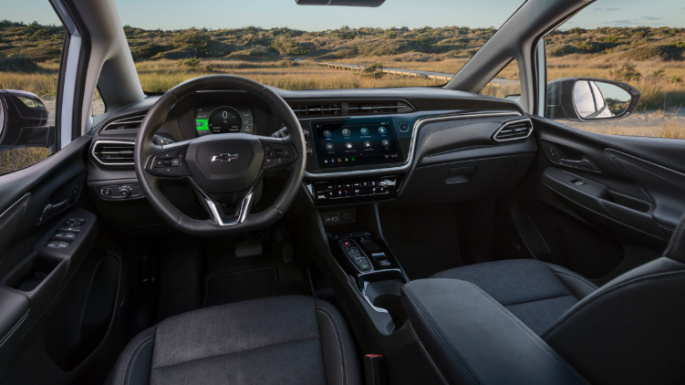
A standard 240-volt home charger would replenish the Bolt’s battery pack in just over nine hours, while DC fast charging would boost its range by 90 miles in around 30 minutes. Even though this could not quite match the Tesla Model 3 of the time, these specs were excellent for an affordable electric vehicle.
It was available in two trim levels: LT and Premier. LT models were far from posh, but they came with plenty of standard features, including a 10.2-inch touchscreen infotainment system, Apple CarPlay, Android Auto, a six-speaker audio system, Bluetooth, cloth upholstery, Xenon HID headlights, and 17-inch alloy wheels. Even entry-level models received the Top Safety Pick Award from the IIHS.
Dimensions of 41.6 inches of front-seat legroom, 36.5 inches of rear-seat legroom, 16.9 cubic feet of cargo space, and 56.6 cubic feet of cargo space with the rear seats folded were excellent for such a small car. Extras such as heated front seats, a leather-wrapped steering wheel, blind-spot monitoring, and rear cross-traffic alert were available to enhance comfort and safety.
Premier models benefitted from niceties such as leather seating, heated rear seats, a 360-degree camera, along with all the standard equipment and extras from the entry-level LT trim. Extras available with the Premier included wireless device charging, pedestrian detection, lane-departure warning, low-speed automatic emergency braking, and a seven-speaker Bose audio system.
No major changes were made to the Bolt until the 2020 model year, when GM upgraded its battery pack, extending its range from 238 miles to an EPA-estimated 259 miles.
Things changed for the Bolt EV in 2022. An exterior and interior refresh brought fresh styling touches to the outside of the car, alongside upgraded interior materials. The powertrain specs, including electric range, horsepower, and torque remain the same, but wireless Apple CarPlay, wireless Android Auto, automatic emergency braking, lane-departure warning, pedestrian detection, and lane-keep assist were all added as standard.
Despite the Bolt EV’s upgrades, its starting MSRP was slashed to $31,000 to distinguish it from the new Chevrolet Bolt EUV crossover. The new Bolt EUV featured nearly identical styling to the regular Bolt, with the same powertrain and front-wheel drive configuration. Its EPA-estimated 247 miles of range and 115 combined MPG-e ratings fell just short of the standard Bolt EV, due to its slightly larger proportions and greater curb weight.
It came with the same standard features as the Bolt EV with a few upgrades – mainly more passenger space. A larger 105.3 wheelbase opened up rear legroom to 39.1 inches, although its small cargo space of 56.9 cubic feet with the rear seats folded was nearly identical to that of the smaller Bolt EV hatchback.
A $33,000 starting MSRP placed the Bolt EUV solidly in the value-oriented segment of the electric vehicle competition. It had the same technology and a similar range to the Bolt EV, just with more space, and cost only a couple thousand dollars more. Like its sibling, both the LT and Premier trim levels were offered.
The final model year of the first and only generation of both the Bolt EV and Bolt EUV was 2013. In a repeat performance of 2022, both models saw sizeable price cuts, bringing the Bolt EV down to a starting MSRP of $26,500 and the Bolt EUV to $27,800.
The discontinuations caused controversy among the Bolt faithful, as both models were doing quite well compared to the increasing competition from automakers such as Honda, Hyundai, Kia, and Volkswagen. The Detroit automaker said it was instead focusing its attention more on models such as the Silverado EV, the Blazer EV, the Cadillac Lyriq, the Equinox EV, and the GMC Sierra EV.
With glimpses of a second-generation 2025 or 2026 Bolt on the table, and with electric vehicles continuing to increase in number, it is only a matter of time before the Bolt nameplate returns, hopefully as a similar, yet improved, value-oriented EV.
